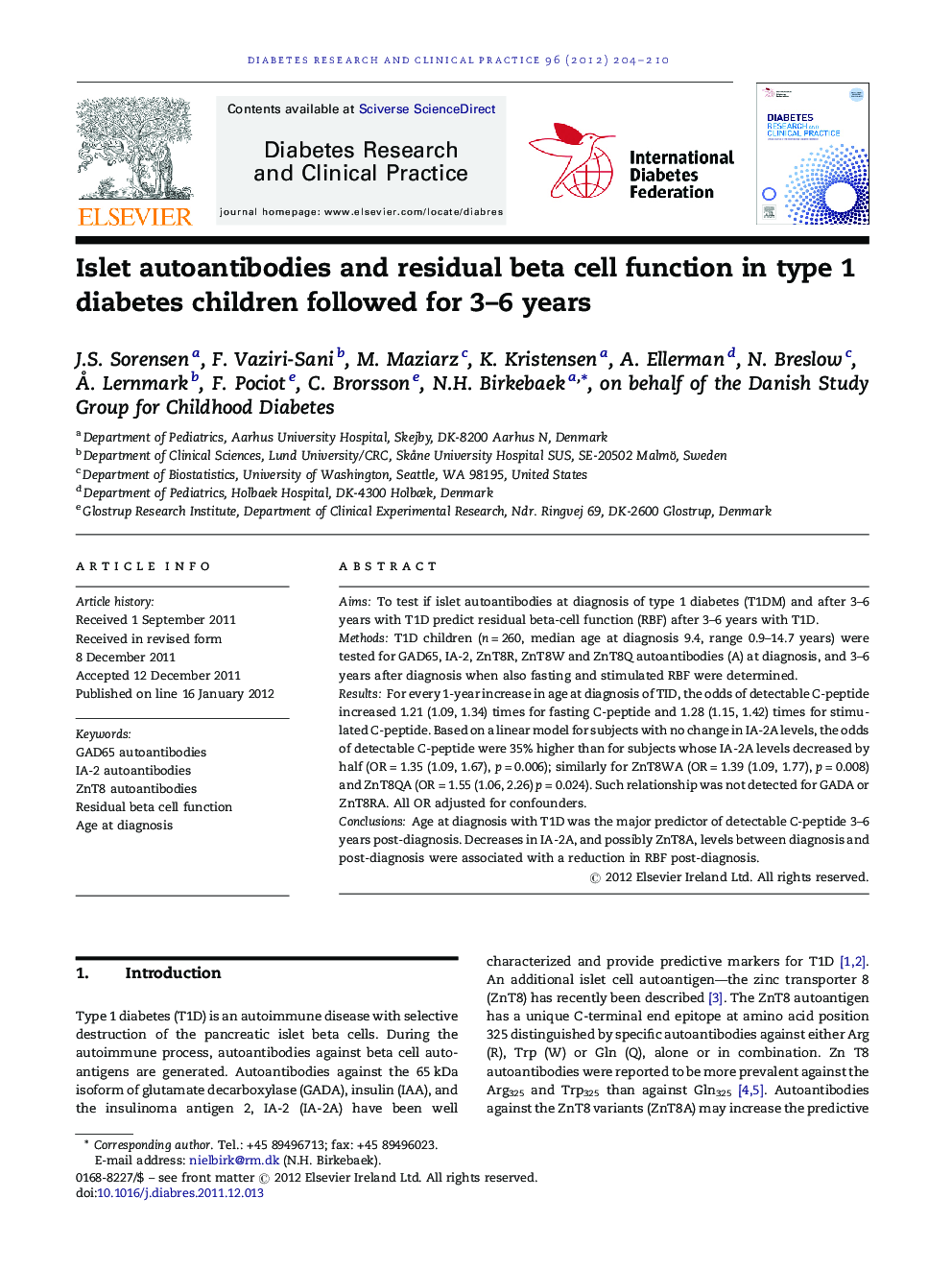| Article ID | Journal | Published Year | Pages | File Type |
|---|---|---|---|---|
| 2796890 | Diabetes Research and Clinical Practice | 2012 | 7 Pages |
AimsTo test if islet autoantibodies at diagnosis of type 1 diabetes (T1DM) and after 3–6 years with T1D predict residual beta-cell function (RBF) after 3–6 years with T1D.MethodsT1D children (n = 260, median age at diagnosis 9.4, range 0.9–14.7 years) were tested for GAD65, IA-2, ZnT8R, ZnT8W and ZnT8Q autoantibodies (A) at diagnosis, and 3–6 years after diagnosis when also fasting and stimulated RBF were determined.ResultsFor every 1-year increase in age at diagnosis of TID, the odds of detectable C-peptide increased 1.21 (1.09, 1.34) times for fasting C-peptide and 1.28 (1.15, 1.42) times for stimulated C-peptide. Based on a linear model for subjects with no change in IA-2A levels, the odds of detectable C-peptide were 35% higher than for subjects whose IA-2A levels decreased by half (OR = 1.35 (1.09, 1.67), p = 0.006); similarly for ZnT8WA (OR = 1.39 (1.09, 1.77), p = 0.008) and ZnT8QA (OR = 1.55 (1.06, 2.26) p = 0.024). Such relationship was not detected for GADA or ZnT8RA. All OR adjusted for confounders.ConclusionsAge at diagnosis with T1D was the major predictor of detectable C-peptide 3–6 years post-diagnosis. Decreases in IA-2A, and possibly ZnT8A, levels between diagnosis and post-diagnosis were associated with a reduction in RBF post-diagnosis.
